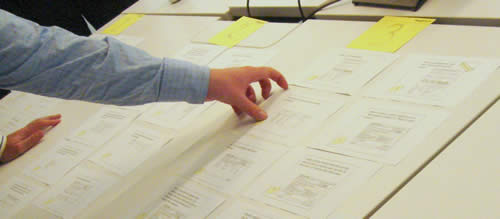Talking about workshop icebreakers with Prashant and here’s an idea: participants write their own tombstone or obituary. “Here lies Jack. A life spent comparing numbers on an excel spreadsheet”…. You could even use Tombstone Generator to bring them to life:
Hmmmm, maybe not the strongest icebreaker (indeed it could kill your workshop before you’ve even started… If you don’t consider cultural sensitivities you could receive some rather blank looks, if your audience doesn’t have a dry sense of humour or doesn’t “get it” you’ll be in trouble…)
So maybe it won’t work so well with people, but how about systems? If you are looking to understand the current system landscape, why not ask the participants in your workshop to list out all the systems they can think of and ask them to write the inscriptions that would appear on the tombstone.
For example…
+
Customer System RIP
1997-2007
Dearly beloved wife of Position System and bastard child of Excel spreadsheet (1991-date).
Threw tantrums and refused to give the right answers when it really mattered
Grew bloated in size due to unwanted change requests
Lost self worth due to non-business value changes
(Died in the loving hands of Indian Outsourcing Company)
She will not be missed
+
Here Lies Position Reconciliation Spreadsheet
1991-2007
Father of Every Conceivable Problem
A real handful to manage but usually got there in the end
Local resident of Sarah’s Desktop, he never got out much
Prone to occasional lapses of judgement that were rumoured to cost the bank millions
He has gone to a better place (recycle bin)
And why restrict this to the current state. It could be a useful exercise in understanding what benefits a new system could be remembered for…
+
Here lies New System
2007-2017
Saviour of the Back Office
Banished reconciliation breaks to history
Defeated the multi-headed Legacy Dragon, bringing peace and harmony to the Ops team
A single voice of truth
Beautiful to look at, easy to get on with, she gave such joy to customers and added such value to the business
Without her Ops can no longer function

